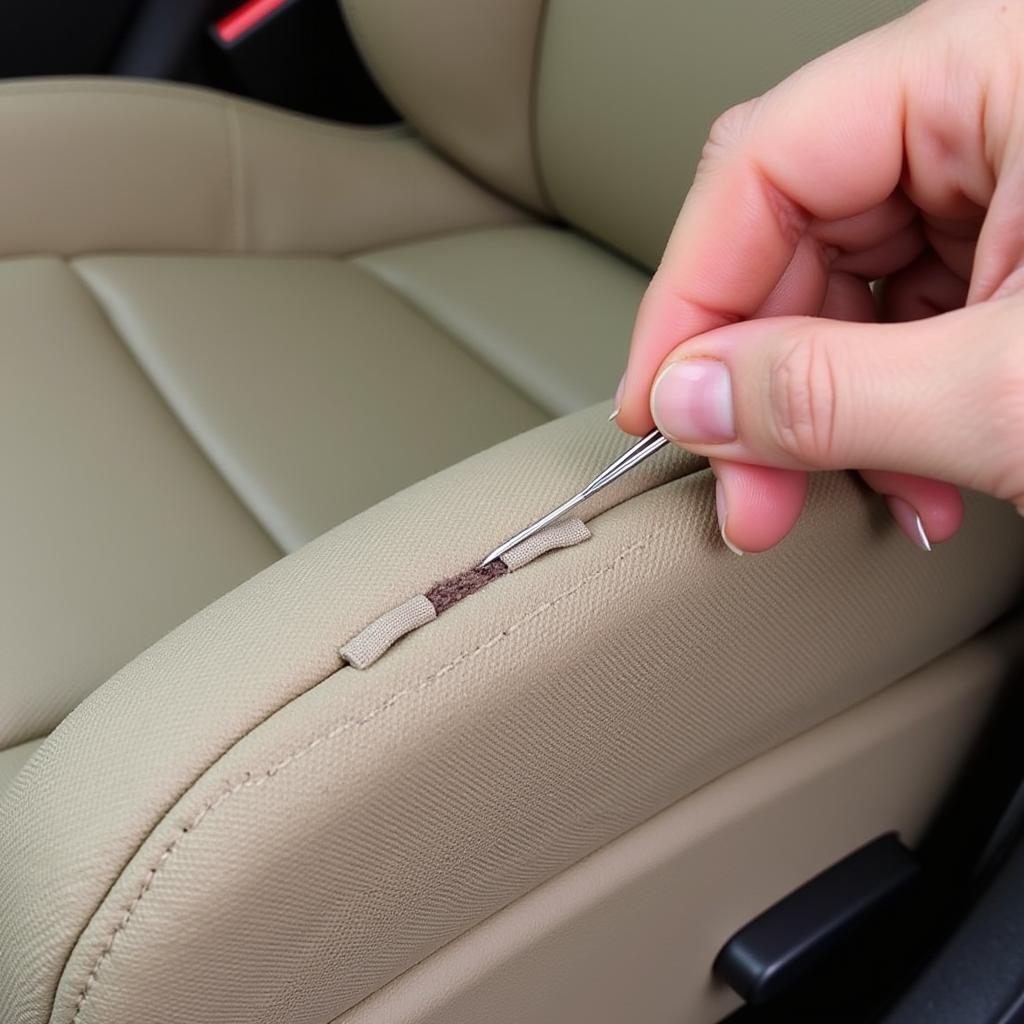Ripped car upholstery can be an eyesore and detract from the overall appearance of your vehicle. Fortunately, fixing this issue often doesn’t require a complete reupholstery job. With a little patience and the right tools, you can repair minor to moderate damage yourself, saving time and money. This guide will provide you with a comprehensive understanding of How To Fix Ripped Car Upholstery, whether it’s fabric, vinyl, or leather.
Understanding the Rip
Before diving into the repair process, it’s essential to assess the damage. Is it a small tear, a large gash, or a worn-out seam? The type of rip will dictate the best repair method. Identifying the material of your car upholstery is also crucial, as fabric, vinyl, and leather require different approaches. Similar to how to fix my car seat, addressing the underlying issue is crucial for a long-lasting repair.
Repairing Fabric Upholstery
Fabric rips are relatively common and can often be fixed with a patch or sewing. For small tears, an iron-on patch designed for fabric upholstery can be a quick and easy solution. Ensure the patch is larger than the tear and follow the manufacturer’s instructions carefully. For larger rips, sewing is the preferred method. Use a heavy-duty thread that matches the upholstery color and a curved needle for easier maneuvering.
 Repairing Fabric Car Upholstery with Needle and Thread
Repairing Fabric Car Upholstery with Needle and Thread
For frayed edges, a fabric adhesive can help prevent further unraveling before patching or sewing. When sewing, try to match the existing stitching pattern as closely as possible for a seamless repair.
Addressing Vinyl Upholstery
Vinyl upholstery repairs often involve using a vinyl repair kit. These kits typically include a vinyl patch, adhesive, and a color matching compound. Clean the area around the rip thoroughly before applying the patch. Ensure the patch adheres firmly to the vinyl and use the color matching compound to blend the repair seamlessly with the surrounding upholstery.
For small cracks or tears, a liquid vinyl repair solution can be used to fill the damaged area. This method requires careful application to avoid creating a noticeable bump. This process shares similarities with fixing a leather car seat, where precision and attention to detail are essential for a professional-looking result.
Fixing Leather Car Upholstery
Leather upholstery requires specialized repair techniques. For small cracks or tears, a leather filler can be used to fill the damaged area. After the filler dries, use a leather dye to match the surrounding upholstery color. For larger rips, a leather patch and adhesive are necessary.
Ensure the patch is slightly larger than the rip and use a leather adhesive designed for automotive applications. For those wanting more detailed instructions on leather repair, [how to fix ripped leather seat in car](https://autotippro.com/how to fix ripped leather seat in car/) provides in-depth guidance. Just like how to fix faded car seats, leather repair requires careful color matching.
Preventing Future Rips
Prevention is always better than cure. Regularly cleaning and conditioning your car upholstery can help prevent premature wear and tear. Using seat covers can also protect your upholstery from damage, especially if you frequently transport pets or cargo. Avoiding sharp objects and being mindful of how you enter and exit your vehicle can also help prevent rips. This is comparable to how you would fix sagging car door – preventative maintenance is key to avoiding more extensive repairs down the line.
Conclusion
Fixing ripped car upholstery can be a manageable DIY project. By understanding the type of rip and the material of your upholstery, you can choose the right repair method and restore your car’s interior to its former glory. Remember, regular maintenance can help prevent future damage and keep your car looking its best.
For any further assistance or specialized repairs, feel free to reach out to us at AutoTipPro. Our team of experts is ready to help you with all your automotive needs. You can reach us at +1 (641) 206-8880 or visit our office at 500 N St Mary’s St, San Antonio, TX 78205, United States.




Leave a Reply